Rosso Fiorentino Arno 40 loudspeaker by Terry London
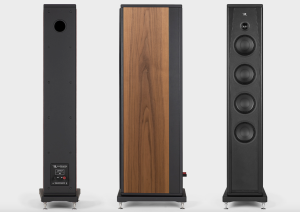
 A recent acquaintance, Scott, an ardent musical lover and audiophile with excellent “ears” regarding the performance of high-end components, asked me if I had ever heard of a pair of Rosso Fiorentino loudspeakers. The answer, until this review, was no. However, over the years, numerous readers have shared their praise for this Italian-based company’s gorgeous physical appearance of its speakers and what they described as an unworldly musicality that was quite special. Because of Scott’s inquiry and what others shared with me, I became intrigued about setting up a review on the Rosso Fiorentino Arno 40 loudspeaker, retail price of $15,000, a new model recently released worldwide. I reached out to Derek “Skip” Skipworth of Audio Thesis, based in Arlington, Texas, who has been the U.S. importer for Rosso Fiorentino since 2017. I want to thank Skip for his ease in setting up this review and extensive knowledge of the Rosso Fiorentino brand.
A recent acquaintance, Scott, an ardent musical lover and audiophile with excellent “ears” regarding the performance of high-end components, asked me if I had ever heard of a pair of Rosso Fiorentino loudspeakers. The answer, until this review, was no. However, over the years, numerous readers have shared their praise for this Italian-based company’s gorgeous physical appearance of its speakers and what they described as an unworldly musicality that was quite special. Because of Scott’s inquiry and what others shared with me, I became intrigued about setting up a review on the Rosso Fiorentino Arno 40 loudspeaker, retail price of $15,000, a new model recently released worldwide. I reached out to Derek “Skip” Skipworth of Audio Thesis, based in Arlington, Texas, who has been the U.S. importer for Rosso Fiorentino since 2017. I want to thank Skip for his ease in setting up this review and extensive knowledge of the Rosso Fiorentino brand.

 I soon discovered that this company was named after a highly acclaimed Florentine artist of the early 16th century, Rosso Fiorentino. The company is located in Florence, Italy. The speaker is named after the Arno River that flows through the city’s heart. I had the great pleasure of visiting Florence, my favorite city in Europe. It was the historical epicenter of the Renaissance that blended the greatest art and scientific inquiry up to its time in the Western world. As you will see further in this review the details of why I rank the Arno 40 loudspeaker one of the great musical transducers on the market today, it became apparent to me that the Rosso Fiorentino company was carrying on the historical tradition of Florence, beautiful art through great science. Rosso Fiorentino was founded in 2007 by Francesco Rubenni, the CEO/designer. The company is highly acclaimed and well-known in the European and Asian markets. However, its footprint is still small in the U.S.. Still, its presence is slowly and steadily growing as American music lovers get exposed to what the Rosso Fiorentino “house sound” has to offer. Francesco and his staff team, along with guest musicians, ultimately listen to any new model as part of an intense design process in what is called the La Sala del Rosso (“the red room”), which is a world-class acoustic space, which is located in a historical castle very close to Florence. Notice that objective measuring is done from the first prototype to the finished model, but the final determinant is this intense listening process by the team’s trained ears regarding the sound of music. Great art is accomplished by combining objective inquiry with the subjective experience of the listener’s experience with live music.
I soon discovered that this company was named after a highly acclaimed Florentine artist of the early 16th century, Rosso Fiorentino. The company is located in Florence, Italy. The speaker is named after the Arno River that flows through the city’s heart. I had the great pleasure of visiting Florence, my favorite city in Europe. It was the historical epicenter of the Renaissance that blended the greatest art and scientific inquiry up to its time in the Western world. As you will see further in this review the details of why I rank the Arno 40 loudspeaker one of the great musical transducers on the market today, it became apparent to me that the Rosso Fiorentino company was carrying on the historical tradition of Florence, beautiful art through great science. Rosso Fiorentino was founded in 2007 by Francesco Rubenni, the CEO/designer. The company is highly acclaimed and well-known in the European and Asian markets. However, its footprint is still small in the U.S.. Still, its presence is slowly and steadily growing as American music lovers get exposed to what the Rosso Fiorentino “house sound” has to offer. Francesco and his staff team, along with guest musicians, ultimately listen to any new model as part of an intense design process in what is called the La Sala del Rosso (“the red room”), which is a world-class acoustic space, which is located in a historical castle very close to Florence. Notice that objective measuring is done from the first prototype to the finished model, but the final determinant is this intense listening process by the team’s trained ears regarding the sound of music. Great art is accomplished by combining objective inquiry with the subjective experience of the listener’s experience with live music.

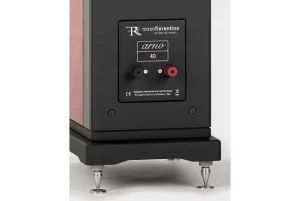
The demo pair of 40 Arno loudspeakers sent for review were clad in perfectly matched walnut side veneer. The front baffle is covered with high-quality black leather. The speaker enclosure’s top, front, and back are black because this is part of the proprietary constrained layer damping method used in the Arno 40 design. The top, front, and back are composed of anodized aluminum, and the rest of the cabinet uses layers of solid HDF, rubber, and aluminum to ensure that all unwanted spurious vibrations are damped out and eliminated. Even the platform at the bottom of the Arno 40 is made of solid aluminum, where you attach spikes to anchor the speakers. The Arno 40 loudspeaker comes with a pair of grills that are held in place by embedded magnets. I would categorize the Arno 40 speaker as a petite, slender floor-stander due to its slender dimensions (44.5 inches H x 9.7 inches W x 15.1 inches D). The cabinet slightly tapers towards the speaker’s back plate, which decreases the possibility of internal standing waves because it eliminates symmetrical parallel walls inside the enclosure. Each Arno 40 loudspeaker weighs 84 pounds. It weighs a lot for its small size, but this density is because of the extensive use of the constrained layer-damping strategy. The Arno 40 loudspeaker has an elegant, understated, classy appearance belies its Italian heritage. The Arno 40 loudspeaker is a 2.5 design with one rear port and another port on the bottom of the enclosure. Its sensitivity is 90dB (2.83V 1m). Its nominal impedance is 8 Ohm (minimum 5 Ohm). Its frequency response is 35 Hz to 25kHz. The Arno 40 loudspeaker uses a 1-inch silk dome neodymium tweeter, a 5.5-inch paper-treated cone mid-range driver, and three 5.5-inch paper-treated cone mid-woofers. All these drivers are a proprietary line of transducers. These drivers were meticulously developed in a mutual collaboration with a leading Italian manufacturer. These units were specifically designed for the Arno 40 and took years of research, testing, and refinement. One pair of rhodium-plated speaker cable terminals is on the back of the Arno 40 loudspeaker.
 Fortunately, I have an excellent listening space 30 ft wide, 24 ft high, and 35 ft deep. This area is the center space of a post & beam home. Therefore, the acoustic space is damped by the amount of wood composing the numerous posts & beams that run through this room. I placed the Arno 40 loudspeakers in the same position that optimizes the performance of all box enclosure speakers in this acoustic environment: 9 ft off the front wall, the nearest side wall is 5.5 ft away, and the back wall is 15 ft behind my listening spot. The Arno 40 loudspeakers were spaced 8 ft apart from the inside of their cabinet with a slight toe-in. My listening position is 8 ft off the front of the loudspeakers.
Fortunately, I have an excellent listening space 30 ft wide, 24 ft high, and 35 ft deep. This area is the center space of a post & beam home. Therefore, the acoustic space is damped by the amount of wood composing the numerous posts & beams that run through this room. I placed the Arno 40 loudspeakers in the same position that optimizes the performance of all box enclosure speakers in this acoustic environment: 9 ft off the front wall, the nearest side wall is 5.5 ft away, and the back wall is 15 ft behind my listening spot. The Arno 40 loudspeakers were spaced 8 ft apart from the inside of their cabinet with a slight toe-in. My listening position is 8 ft off the front of the loudspeakers.
After I received the Rosso Fiorentino Arno 40 loudspeakers, I set them up and put some music on to warm them up. The pair sent to me were not broken-in demos but a brand-new pair with no hours on them. When I returned and sat down to listen to the Arno 40s, I was shocked by what I heard. With no break-in, these speakers deliver with no glare, harshness, or etch a level of exceptional tonal beauty across the entire frequency spectrum, unbelievable spatial qualities regarding image solidity/density, precise placement/layering of instruments in a vast and open soundstage, powerful, taut extended bass lines, and finally a level of transparency that would rival the best electrostatic designs regarding the smallest minutiae/micro-details being revealed and easily heard. All these qualities went even higher as the break-in process accumulated more hours.
Let’s go back to what I just stated above regarding the performance of the Arno 40 loudspeakers, with more details in each tonality, spatiality, and dynamics category.
Tonality/Timbres/Color
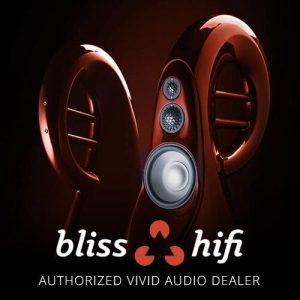 As I have shared numerous times in my reviews, I am a tonality, timbres, and color listener first; if these qualities are not right, the rest of what a loudspeaker can offer (soundstaging, bass extension, dynamics) does not matter. To describe the Rosso Fiorentino Arno 40 loudspeakers’ rendering of different instruments and voices’ tonality, I would use descriptors such as voluptuous, gorgeous, and deep saturation of the colors of the singers or musicians playing these instruments. My reference loudspeakers are first-class at producing rich, accurate, and beautiful tonality. However, they now sound slightly washed out or less vibrant when creating these colors compared to the Arno 40 loudspeakers. This visual analogy will get my point across. Think of a watercolor-based painting compared to an oil-based painting. The density of color and how intense that color will appear is less radiant in the watercolor painting than in the oil-based one. These intense and rich tonal characteristics were also found in the highest frequencies. The Arno 40s silk soft dome tweeter offered a sweet, pure tone, natural micro-details, and ethereal decay trails without any etch or brightness.
As I have shared numerous times in my reviews, I am a tonality, timbres, and color listener first; if these qualities are not right, the rest of what a loudspeaker can offer (soundstaging, bass extension, dynamics) does not matter. To describe the Rosso Fiorentino Arno 40 loudspeakers’ rendering of different instruments and voices’ tonality, I would use descriptors such as voluptuous, gorgeous, and deep saturation of the colors of the singers or musicians playing these instruments. My reference loudspeakers are first-class at producing rich, accurate, and beautiful tonality. However, they now sound slightly washed out or less vibrant when creating these colors compared to the Arno 40 loudspeakers. This visual analogy will get my point across. Think of a watercolor-based painting compared to an oil-based painting. The density of color and how intense that color will appear is less radiant in the watercolor painting than in the oil-based one. These intense and rich tonal characteristics were also found in the highest frequencies. The Arno 40s silk soft dome tweeter offered a sweet, pure tone, natural micro-details, and ethereal decay trails without any etch or brightness. 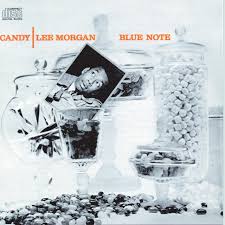
My all-time favorite jazz trumpeter is the late/great Lee Morgan. On his Blue Note album “Candy,” he performed some of the most lyrical playing in any of his recordings. He had a deep, silky, smooth, full tonality, and the Arno 40s display the glory of his beautiful tonality to a level I had never experienced in listening to this recording for over forty years.
Spatiality
Any loudspeaker considered a world-class reference should easily pull off the illusion of disappearing and floating a panoramic sound stage in front of the listener. The Arno 40 loudspeaker accomplishes this feat with ease and adds the following sonic characteristics. Depending on the recording, the soundstage’s height, depth, and width were produced to the point that you experienced being magically transported to the music venue where the recording was made. The space/air between each musician was precisely and realistically created in a three-dimensional layered soundstage. Each image had a solidity/density that created the illusion of a realistically sized musician performing in front of me on stage. All of this is presented as an interwoven tapestry of music without sounding artificial or mechanical.
 When I cued up Count Basie’s recording of Analogue Production’s “Farmers Market Barbecue,” the Count and his big band were not just spread out in a natural sitting arrangement for a big band. Still, the total transparency offered by the Arno 40s allowed the reflections of the rhythm section on the sound studio’s back and side walls to appear from almost behind my sitting position. This immersed me in the illusion that I was sitting in the front row of this magnificent swinging big band. Can the Arno 40 loudspeakers scale from the quietest musical passages to the loudest crescendos? This recording answered that question. With ease and effortlessness, the Arno 40 loudspeakers tracked the highest dB levels without struggle or strain.
When I cued up Count Basie’s recording of Analogue Production’s “Farmers Market Barbecue,” the Count and his big band were not just spread out in a natural sitting arrangement for a big band. Still, the total transparency offered by the Arno 40s allowed the reflections of the rhythm section on the sound studio’s back and side walls to appear from almost behind my sitting position. This immersed me in the illusion that I was sitting in the front row of this magnificent swinging big band. Can the Arno 40 loudspeakers scale from the quietest musical passages to the loudest crescendos? This recording answered that question. With ease and effortlessness, the Arno 40 loudspeakers tracked the highest dB levels without struggle or strain.
Dynamics
The Rosso Fiorentino Arno 40 looudspeakers have the overall transient speed of an electrostatic panel design, delivering an “aliveness” or “jump” factor. If the music contains heat and explosive dynamics, the Arno 40 loudspeakers deliver these macro-dynamics intact without any sign of strain or stress. Regarding the bass region, the Arno 40 loudspeaker has excellent bass weight, extension, and accuracy, which was heard on many recordings that feature deep bass frequencies. Another noticeable positive attribute was the Arno 40 loudspeakers’ non-existent noise floor. This lack of residue noise allows transients/dynamics to be propelled with significant weight and force into the listening space. This sonic virtue is mainly created by Rosso Fiorentino’s proprietary constrained layer damping method, eliminating any spurious cabinet vibrations and, hence, no noise floor contamination.
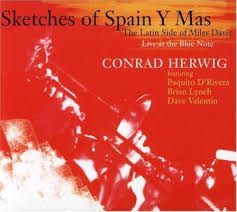 The recording that displayed the high caliber dynamic capabilities of the Arno 40 loudspeaker was Conrad Herwig’s High Note recording “Sketches of Spain Y Mas.” This album was recorded live at the Blue Note Club in New York City. It contains explosive and thrilling Latin percussion passages that, if reproduced correctly, will create a visceral punch in your gut. The Arno 40s rendered these powerful dynamics intact with the visceral punch without any attenuation/muting at high volume levels.
The recording that displayed the high caliber dynamic capabilities of the Arno 40 loudspeaker was Conrad Herwig’s High Note recording “Sketches of Spain Y Mas.” This album was recorded live at the Blue Note Club in New York City. It contains explosive and thrilling Latin percussion passages that, if reproduced correctly, will create a visceral punch in your gut. The Arno 40s rendered these powerful dynamics intact with the visceral punch without any attenuation/muting at high volume levels.
With what I shared in the section of this review on the Rosso Fiorentino Arno 40 loudspeaker’s performance, you can now understand why I believe Francesco Rubenni and his team are entirely in step with the grand tradition of the Florence based renaissance artisans in using inquisitive experimenting/listening to produce great art. The Arno 40 loudspeaker is a beautifully designed and constructed speaker. It offers the best synthesis to this point in time, for my taste, in the blending of extremely high resolution (total transparency-micro-details-decay trails) with the most intense, vivid, and dense timbres and colors. This is certainly not an inexpensive loudspeaker. However, its $15,000 price tag is very reasonable because of what the Arno 40s offer and because they compete with loudspeakers triple their price. I have now spent hours in front of the Arno 40 loudspeakers, and what always pops into my mind is how charming and enchanting these loudspeakers are in presenting music in a way that emotionally draws me into enjoying that specific musical moment and forgetting everything else. I’ll be purchasing the Arno 40 loudspeakers because these special moments are worth the investment to me.


Specifications: Arno 40
Price: $14,995
Design: 2.5 way rear/down firing ported floorstander
Sensitivity: 90 dB (2.83V, 1m)
Nominal Impedance: 8Ω (minimum 5Ω)
Drivers:
1″ silk dome neodymium tweeter
5.5″ paper treated cone midrange
(3) 5.5″ paper treated cone midwoofers
Frequency Response: 35 Hz – 25 kHz
Recommended Power: 25-150 watts into 8Ω
Cabinet: solid HDF, rubber, and aluminum in a constrained layer damping method
Dimensions: 44.5″x9.7″x15.1″ (HxWxD)
Weight: 84 lbs
Finishing Options: Standard: Walnut, High Gloss Black
Optional finishes are available in select leathers and a myriad of lacquer finishes.
TJ’s Associated Equipment
Source:
Pass Labs DAC-1
Reimyo DAP-999EX Toku
Mark Levinson 31.5 transport
Pro-Ject reference CD transport & LTA power supply
Amplification:
Coda 5.5 amplifier
SPL S1200 amplifier Threshold 550e amplifier
SPL Elector preamplifier
AricAudio Motherlode MKII preamplifier
AricAudio Super SET 300B amplifier
Loudspeakers:
NSMT System Two
Tekton Design Ulfberth
Music Design Knight One
Accessories:
Jena Lab’s symphony XLR IC’s
Jena Labs reference AES/EBU digital cable
Kirmuss Audio Adrenaline speaker wires
Krolo Design reference rack & footers
Puritan Audio power conditioner & grounding system
Audio Archon power cords
3 thoughts on "Rosso Fiorentino Arno 40 loudspeaker by Terry London"
Leave a Reply
Stereo Times Masthead
Publisher/Founder
Clement Perry
Editor
Dave Thomas
Senior Editors
Frank Alles, Mike Girardi, Russell Lichter, Terry London, Moreno Mitchell, Paul Szabady, Bill Wells, Mike Wright, and Stephen Yan,
Current Contributors
David Abramson, Tim Barrall, Dave Allison, Ron Cook, Lewis Dardick, John Hoffman, Dan Secula, Don Shaulis, Greg Simmons, Eric Teh, Greg Voth, Richard Willie, Ed Van Winkle, Rob Dockery, Richard Doran, and Daveed Turek
Site Management Clement Perry
Ad Designer: Martin Perry






Analog Productions? Which turntable are you using?
Hi Terry, any experience with Kudos Titan speakers? How do these compare to the Kudos?
Do they work well on low volume?